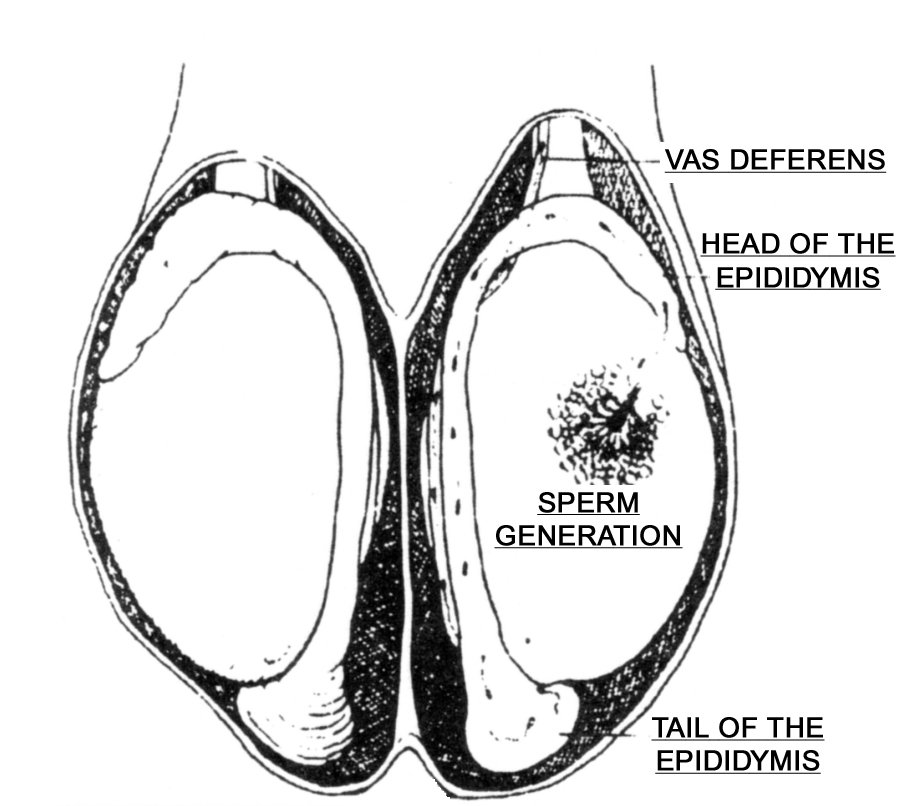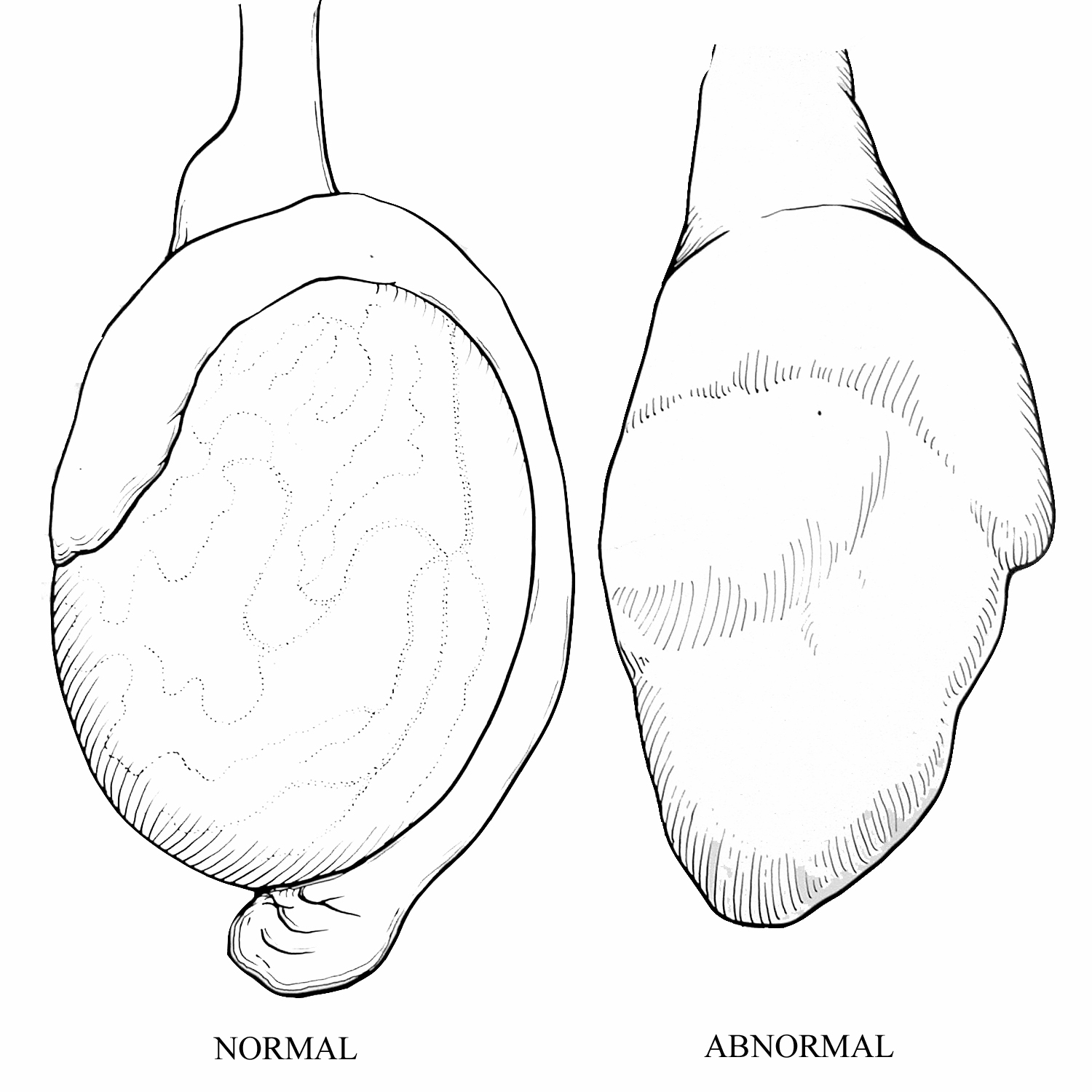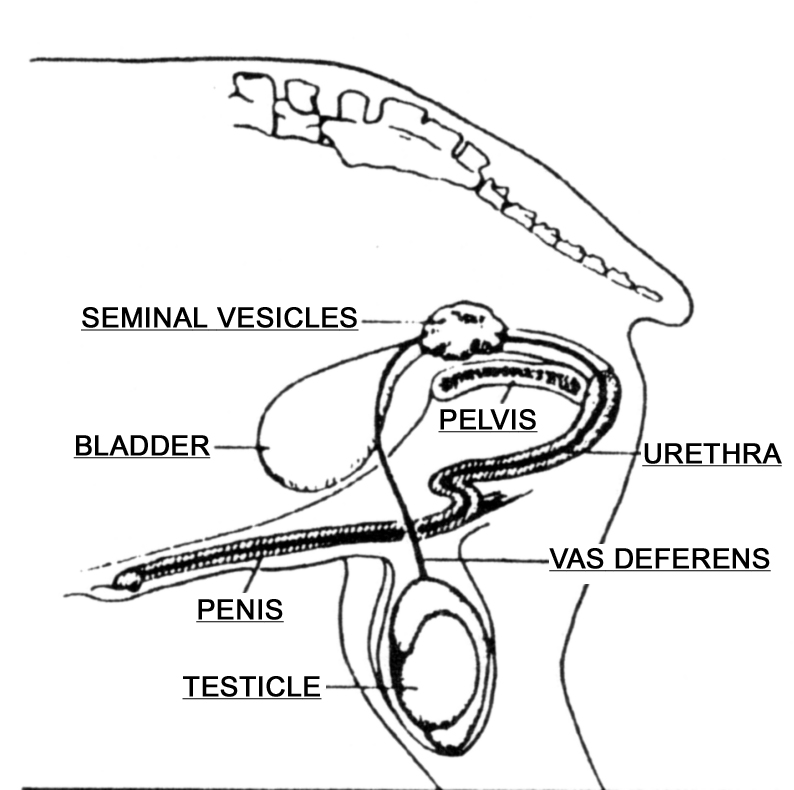Ram Epididymitis
Quick Facts
-
Ram Epididymitis is the most costly problem for a sheep producer's
reproductive program.
-
The disease is caused primarily by the organism Brucella
ovis, which is discharged from an infected ram via the semen and urine.
-
The infection causes an inflammation of the epididymitis with
permanent damage to sperm and delivery of viable semen reducing the breeding
capacity of a ram.
-
The infection rarely causes a problem in ewes, although the
possibility of abortion does exist.
-
Controlling the disease is based on early diagnosis by detection
of abnormal semen characteristics, testing with the Enzyme Linked Immuno-Sorbent
Assay (ELISA) test and immediate removal of infected animals from the ram
breeding flock.
-
A rigid testing and culling program is the only way to control the disease.
Ram epididymitis, if not controlled by a rigid testing and culling program, is the most costly problem in a sheep producer’s reproductive program. Its incidence in infected flocks varies from 15-45% with breeders losing 25% of their ram flock breeding potential. With the current high cost of range and stud rams, the possible direct financial loss should be immediately apparent.
In mature rams, the disease is caused primarily by Brucella ovis (B. ovis)
bacterium, with other organisms or trauma playing a minor role. The B. ovis
organism is discharged from an infected ram through semen and urine. The organism can gain entry into another ram by:
-
Breeding a ewe that recently has been bred by an infected ram (the ewe acts as a mechanical carrier).
-
Infected rams mounting other rams or the ram’s social habits of sniffing and licking the urine of an infected ram.
-
Mounting a homosexual ram that was recently mounted by an infected ram.
The infection rarely causes a problem in the ewe although the possibility of abortion does exist. The ewe will generally clear the organism from the vagina within two estrus (or heat) cycles. A common observation in a flock where B. ovis
infected rams are used for breeding is recycling ewes. Following entry of the organism into the ram's body it localizes in the epididymis (see Figure 1) causing tissue inflammation, swelling and scar formation (see Figure 2). As the disease progresses, the testicular tissue is replaced by scar tissue.

|

|
|
Figure 1: Normal testicle, cross section as viewed from the rear. |
Figure 2: Normal testicle and one infected with epididymitis. |

|
|
Figure 3: Genital tract of the ram.
|
The epididymis is a tubular portion of the testicle that delivers sperm to the urethra via the vas deferens (see Figure 3). Reproductive failure occurs in varying degrees due to the extent of damage to the epididymis and testicle. Epididymitis usually affects only one testicle and the epididymis. Since testicular volume is directly correlated to fertility, the loss of any functional testicular tissue reduces the breeding capacity of the animal.
Studies show that rams with epididymitis have semen of inferior quality. The Brucella organism weakens the neck of the spermatozoa causing a separation of the head from the midpiece ("tail") resulting in a non-viable sperm cell. This is frequently accompanied by numerous white blood cells in the semen. If both testicles are involved conception rates may be 0 to 40%. If only one testicle is involved conception rates may be 70%, whereas, with clean rams having good healthy sperm cells conception rates of 90% or better can be expected. In other studies, it was found that ewes bred to rams with epididymitis had an extended lambing period of 60 days more than ewes bred to normal rams due to lowered fertility.
The loss of breeding capacity is minor when one considers the possibilities of:
-
Spreading the disease to other rams with further loss of breeding capacity.
- Decreased lambing percentage.
-
More singles, more still births and weak lambs; potentially reducing the lamb crop by as much as 10%.
- The consequences of extended lambing periods.
-
Lambs born in the second and third cycle are 10-20lbs lighter at weaning which can equate to a loss of $10-$20 for each cycle missed.
Diagnosis of ram epididymitis is an essential part of a breeding soundness examination. Clinical diagnosis is possible by palpation of the affected epididymis only late in the disease or after permanent damage has occurred. A percentage of infected rams spread the disease and never exhibit palpable lesions. Early diagnosis is accomplished by a microscopic evaluation of the semen and the ELISA test. One of the first flock indications of a Brucella ovis infection is an extended lambing period. If 85-90% of the lambs are not born within the first 18 days of the lambing period; ram fertility is of major concern.
There is no effective treatment for B. ovis. Vaccination is not recommended as it is not effective and interferes with the ELISA test. Brucella ovis
can be eliminated by a stringent testing and culling regime. Testosterone production, which regulates the sex drive (libido) in the ram fluctuates with daylight much like the estrus cycle in the ewe. Transmission of B. ovis decreases with the decrease in sexual activity. Therefore, to optimize elimination of B. ovis
from a flock, testing with ELISA should be conducted every 45 - 60 days during that period (February - July) until 2 consecutive negative tests on the ENTIRE ram population have been obtained.
The cardinal rule is to use clean rams with normal sexual orientation! Have a Breeding Soundness Examination conducted annually on all rams prior to the breeding season. If you are buying rams, only purchase rams that have scored satisfactory or excellent on a Breeding Soundness Examination as an indication of breeding potential. Purchased rams should have tested negative for B.ovis within the last 30 days or come from a B.ovis certified clean flock. Reputable breeders should provide paper copies of these tests upon request by the purchaser.
For more information about ram epididymitis and how to incorporate ram breeding soundness examinations into your operation contact:
Optimal Livestock Services, LLC
970-231-2477
Prepared by Cleon V. Kimberling, Gerilyn A. Parsons, Jay Parsons, and Wayne Cunningham
Copyright © 2010 CleonsCorner.com All Rights Reserved
